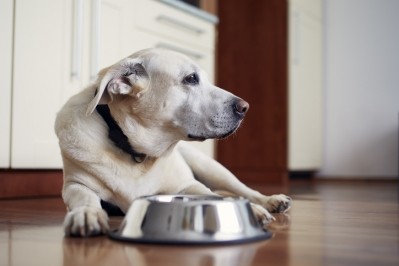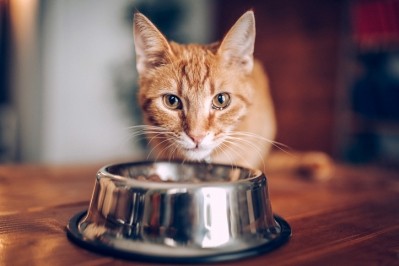Insect protein for companion animals: Hill’s Pet Nutrition sees great potential

On a call with FeedNavigator, Nicholas Rozzi, the vice president of product development, discussed the company's introduction of MSC-certified seafood and insect protein in a range tailored for pets with sensitive stomachs and skin, launched last summer.
Hill’s updated its Science Diet Sensitive Stomach & Skin portfolio to incorporate traceable, wild-caught MSC-certified Alaskan Pollock and protein derived from Black Soldier Fly (BSF) larvae.
“That was a first for us, partnering with the MSC to feature their logo on the front of our bag. The idea of incorporating insect protein emerged as we sought ways to reduce carbon footprint and introduce new, sustainable protein sources into our products. This led us down the path of exploring insect protein as a viable option for our product line,” Rozzi told us.
For the US product, the insect protein is raised in North America. The Hill’s product in Europe using insect protein is a feline product, in which the insects are sourced in Europe.
Evaluating new ingredients
Rozzi outlined five key areas Hill’s focuses on when considering insect proteins. Firstly, regulatory approval is paramount, leading the pet food maker to choose BSF protein due to its widespread regulatory acceptance. Secondly, nutritional value is crucial, and the rich protein content and fiber of BSF align well with Hill’s standards for precision nutrition, he told us.
Moving forward, taste becomes a priority, with Hill’s collaborating with partners at the Pet Nutrition Centre to conduct palatability testing. “We rigorously screen products to ensure they not only meet nutritional standards but are also enjoyable for pets.”
Education is emphasized as Hill’s aims to inform consumers and the industry about the benefits of these proteins and ensure their acceptance.
“And obviously continuity of supply is the final factor that we got to pay attention to when we're developing these products; every ingredient we ever qualify at Hill’s Pet Nutrition must go through the same rigorous steps for approval. We carried out the same approach on Alaskan Pollock,” added Rozzi.
"At Hill's Pet Nutrition, sustainability encompasses three key pillars: people, pets, and the planet. Our mission is to foster positive connections between people and pets while also supporting our employees and partners, including suppliers. Since 2002, our Food, Shelter & Love Program has facilitated the adoption of over 14 million pets, collaborating with over 1,000 animal shelters across North America."
Hill’s has supported the Center for Environmental Sustainability through Insect Farming (CEIF), a multi-university center to research and advance the use of insect ingredients.
When asked about the industry's readiness to assess the environmental footprint of insect-derived protein compared to conventional sources, he noted: 'We are currently collaborating with industry trade groups and academic partners to expand the body of knowledge in this area. However, there comes a point where action is necessary. If we don't launch a product and put it out there, how will we progress further with our research? At what juncture will we deem it sufficient?”
Future trends
Asked how he envisions the evolution of sustainable proteins within the pet food industry in the coming years, Rozzi remarked:
“I believe it will become increasingly important. When we consider the raw material supply for both the pet food and human food industries, we see significant synergies. Many materials used in pet food aren't utilized in the human food supply chain but still need a destination. By incorporating these materials, we contribute to the sustainability of our raw material supply.
“If we can further reduce the environmental impact of these raw materials, it will have a positive ripple effect upstream, potentially benefiting human food production as well.”
Such interconnectedness presents a significant opportunity for carbon reduction across the board, he maintains.
Hill's Science Diet Sensitive Stomach & Skin Dog Food and Hill's Science Diet Sensitive Stomach & Skin Cat Food were included among Newsweek’s 2024 Best New Products, voted by consumers.
But is there strong consumer interest in sustainably sourced ingredients, particularly within the pet food sector?
“According to a Mintel study on America's pet owners, nearly three out of four respondents, specifically 71% of younger cat owners, agree that it's important to use environmentally friendly pet products and services. This data comes from a consumer survey of over 1,500 pet parents,” noted Rozzi.
Emissions reduction
Hill’s, he continued, recognizes that Scope 3 emissions are one of the largest contributors to emissions within the pet food industry.
“When we consider the three scopes of emissions, Scope 1 involves direct emissions from burning fossil fuels for energy generation, such as natural gas, oil, or coal. An example in the pet food industry would be using natural gas to fuel a boiler. Scope 2 emissions occur when we purchase electricity generated by burning fossil fuels. These emissions indirectly impact our operations when we use that electricity.
“However, it is Scope 3 emissions that encompass everything else within the supply chain, including ingredient sourcing. In fact, Scope 3 emissions typically represent over 50% of a pet food company’s emission, with a significant portion attributed to ingredients.
“Therefore, to make meaningful strides in carbon reduction efforts within our products and brands, we must focus our efforts on addressing Scope 3 emissions. While we can improve Scope 1 emissions through equipment efficiency and Scope 2 emissions by purchasing renewable energy, it's Scope 3 where the most impactful changes can be made in the pet food industry."












